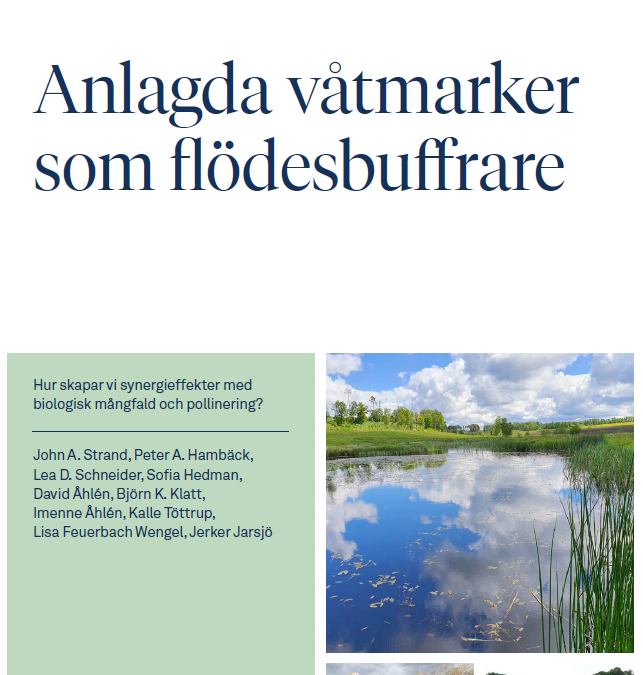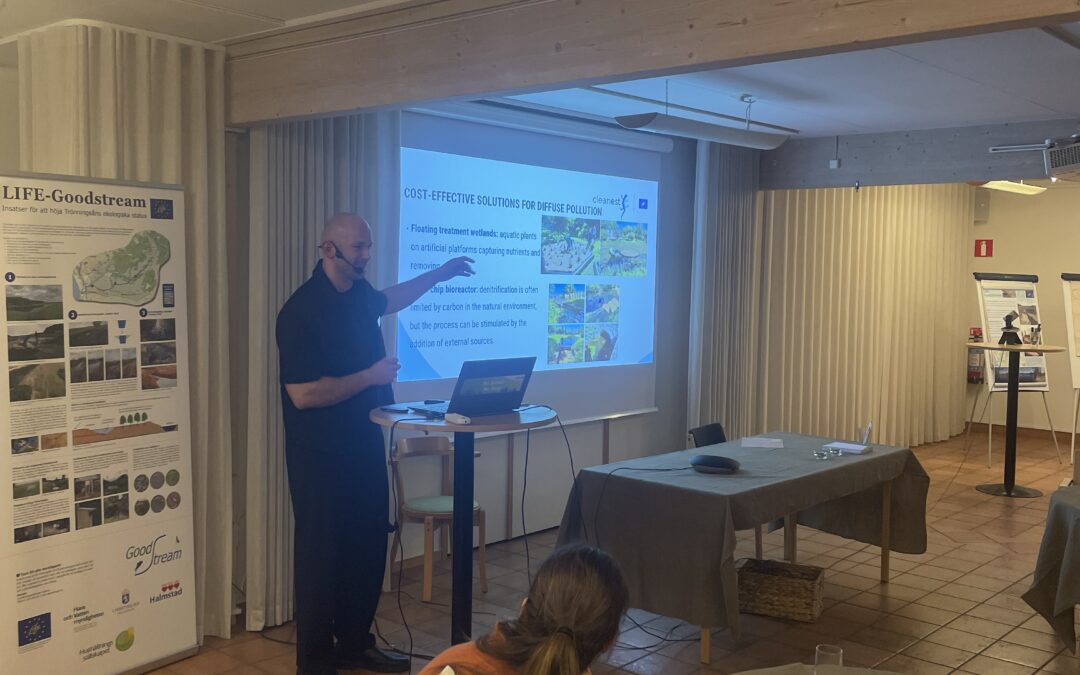av John Strand | jul 5, 2024 | Wetland as buffers
Peter and Jerker were interviewed in the ”VA-Pod” on the multifunctionality of wetlands. Listen to it here

av John Strand | jul 5, 2024 | Wetland as buffers
The end report from the project ”Wetlands as buffers can now be downloaded from the Swedissh EPAs homepage. Click here to find it: Report

av John Strand | dec 27, 2023 | Wetland as buffers
The end conference (joint wiith the project LIFE-Goodstream) was very rewarding with lots of exiting presentations from the Buffer project as well as related research from Sweden as well as from Latvia and Estonia.
av John Strand | nov 17, 2023 | Wetland as buffers, Wetlands 2.0
We will arrange an joint end conference forLIFE-Goodstream, Wetlands as buffers and Wetlands 2.0, the 14-15 of December 2023. Feel free to register at John.strand@hushallningssallskapet.se The agenda can be viewed here.
av John Strand | sep 22, 2023 | Wetland as buffers
Now all field work is done in our study of how dragonfly larvae (Odonata) are affected by fish presence and how adults are affected by wetland properties, particularly the immediate surrounding areas. Three years of survey of adult dragonflies, two separate surveys of...
av John Strand | aug 27, 2023 | Management of CW, Wetland as buffers, Wetlands 2.0
The data from the surveys of dragonflies in the project was, together with data from the project LIFE-Goodstream, compiled into a guidebook to the public and to the landowners. The aim is to raise awareness of wetlands and their biodiversity by focusing on dragonflies...



